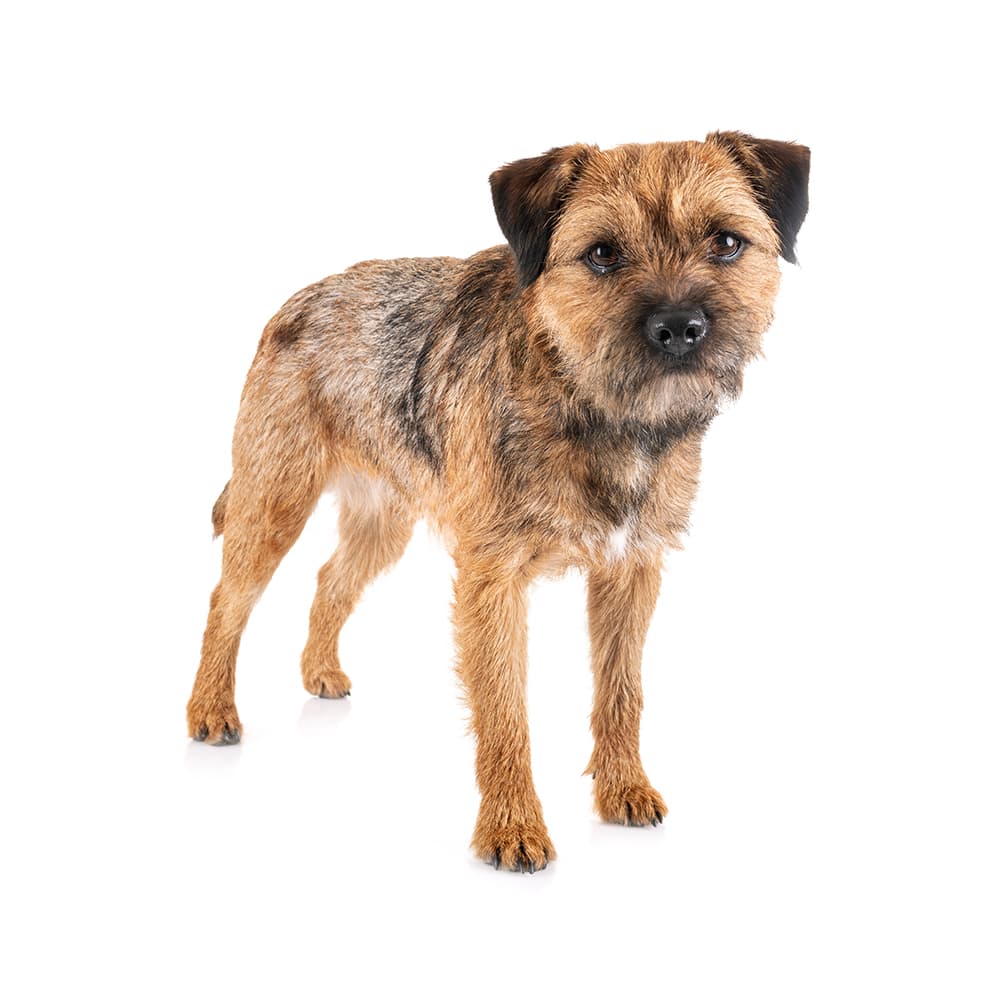Discover your dog's connection to this breed and 200+ others


Discover your dog's connection to this breed and 200+ others



The Border Terrier is a small, energetic breed known for its friendly nature and distinctive ""otter"" shaped head. These dogs are well-suited for a variety of environments, but originally come from the rugged border region between England and Scotland, hence their name. The Border Terrier's history traces back to the 18th century in the border region between England and Scotland. They were bred to be versatile working dogs, capable of keeping up with horses and hounds while hunting, and compact enough to chase and dispel foxes from their burrows. Their work included not only hunting but also guarding, and they were valued for their tenacity, courage, and intelligence.
Border Terriers are generally healthy dogs, but may suffer from degenerative myelopathy, patellar luxation, and eye conditions such as progressive rod-cone degeneration. Genetic testing for these and other conditions can assist veterinarians with diagnosis and proactive care, as well as help breeders identify affected and carrier dogs.
Border Terriers are known for their friendly and affectionate nature. They are intelligent, good-natured dogs that get along well with humans and other animals. They're energetic and require regular physical and mental stimulation. They enjoy activities such as agility, tracking, and even obedience training. Despite their energetic nature, they can also be quite adaptable and can settle well in a variety of living situations, from apartments to larger homes with yards.
Like all terriers, they can be stubborn at times, and early socialization and training are important to ensure they grow up to be well-behaved dogs. Border Terriers can be good family pets, but they are not necessarily the best choice for homes with very small children due to their energetic and sometimes boisterous play. They are generally friendly with other dogs, but their high prey drive means they may not be suitable for homes with small animals like rabbits or guinea pigs unless they have been raised together from a young age.
A canine genetic lineage is a group of individuals or entire breeds that descended from common ancestors predating modern breed formation. Often these lineages are associated with a ‘type’ of dog with a unique historical working role and associated behaviors (e.g., herding, scent hunting, etc.).
Terriers were bred to hunt pests like rats, foxes, and badgers. Terriers are tenacious and fearless with high energy levels, strong prey drive, and feisty temperaments which all help in their hunting abilities. Terriers were used as mighty hunters in both urban and rural settings. Terriers have natural hunting instincts and protective tendencies.
Example breeds with ancestry from this lineage include Jack Russell Terrier, Scottish Terrier, and Yorkshire Terrier.
According to the American Kennel Club (AKC), early names of the Border Terrier included the Reedwater Terrier, Ullswater Terrier, and Coquetdale Terrier, which all derived from locations in northern England that bordered Scotland.
Despite their long history, the Border Terrier wasn't recognized by the Kennel Club of England until 1920, and a decade later by the American Kennel Club in 1930.
https://vgl.ucdavis.edu/breed/border-terrier?page=1
https://www.hillspet.com/dog-care/dog-breeds/border-terrier
https://www.akc.org/dog-breeds/border-terrier/
https://www.ukcdogs.com/border-terrier
https://www.fci.be/en/nomenclature/BORDER-TERRIER-10.html
Recommended by top vets with decades of experience
21 breeds
64 genetic health markers
50 genetic trait markers
